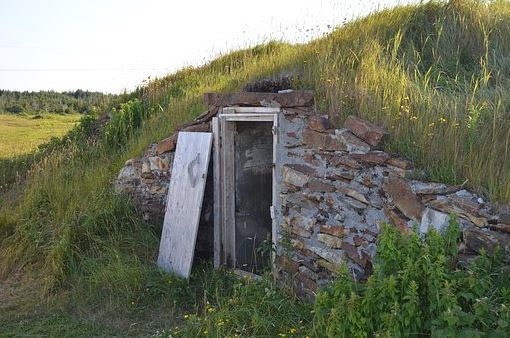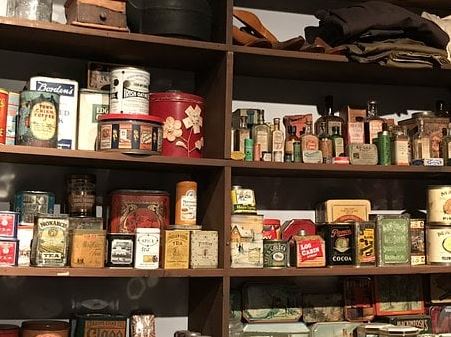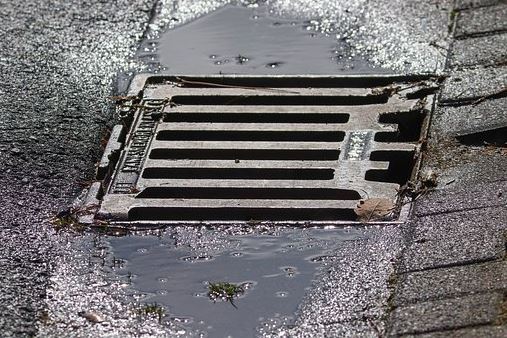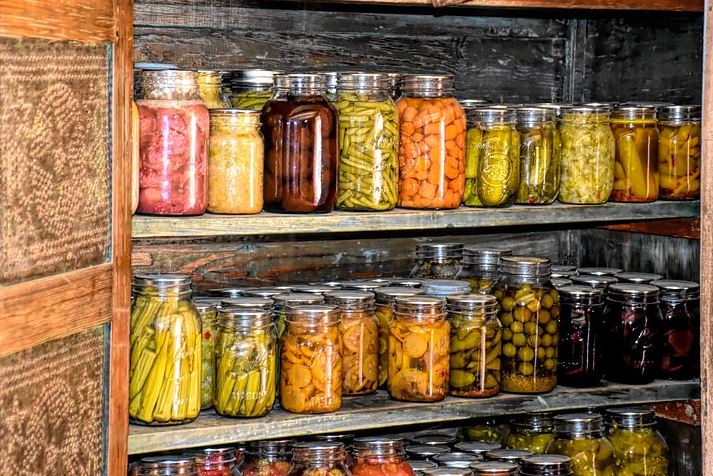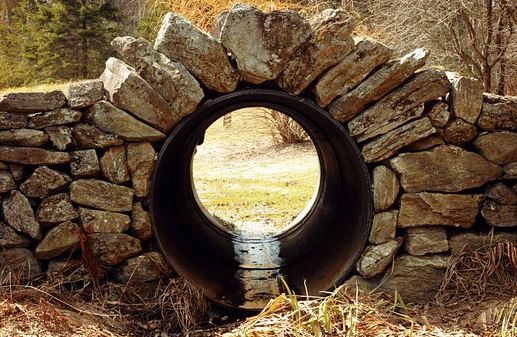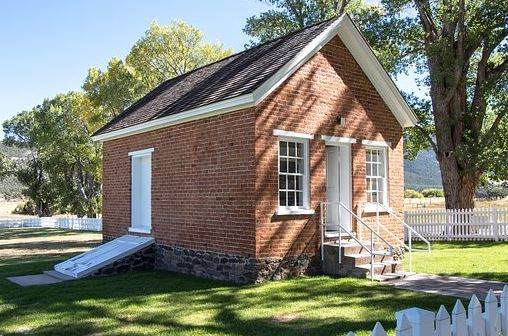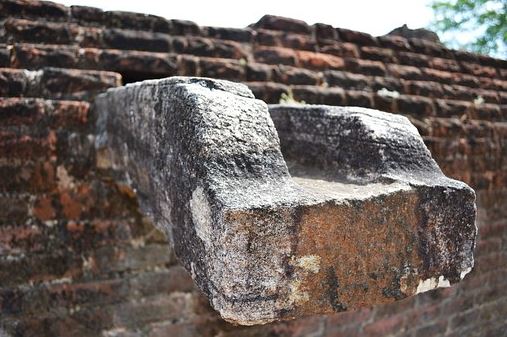Storage of food and other items is an essential thing to do when you are living off-grid or at any place that does not have proper storage facilities. In such cases, a root cellar would essentially help you in storing food. However, some people still fail to preserve their food even while using a root cellar. This is because they are not fully focused on creating a root cellar along with its essential elements.
Essential Elements of a Root Cellar Design
There are six factors to consider when designing every root cellar.
- Ventilation
- Drainage
- Humidity
- Darkness
- Earth Shelter
- Temperature
To design an efficient root cellar, you have to regulate humidity, temperature, ventilation, and drainage. Otherwise, anything kept in the root cellar won’t last for long. Besides, your time and resources would be wasted as well.
1. Ventilation
It is one of the crucial parts of the Root Cellar design. It helps in maintaining the temperature and humidity. It allows air to enter and exit from the cellar so your produce won’t spoil. The perfect balance is required. Excess or shortage would spoil the food.
Another major concern is ethylene gas. Ethylene is a colorless, flammable gas. According to OSHA (Occupational Safety and Health Administration), it is highly toxic for humans. When a fruit or a vegetable is harvested, they release ethylene gas, which causes other produce to spoil. There must be two vents present in the design of a Root Cellar for the air to pass through easily.
The intake vent will bring cool air into the cellar, which is needed for the vegetables to stay fresh. Ideally, the intake vent should be placed on the opposite side of the outtake vent.
An outtake vent allows stale and warmer air to pass out into the atmosphere. One of the main reasons to install an outtake vent is to allow ethylene gas to escape. Before setting up the ventilation passage, notice the airflow and adapt according to the direction so that air flows accordingly.
The exhaust vent should be placed above the ground in the ceiling, which will create a passage for warmer air and gasses to pass. Keep in mind that
- You should make sure that during winter, the vents don’t get clogged or frozen. Seal them properly so they stay functioning.
- In the summer, keep the vents open all the time.
- If you have more than one Root Cellar, every room needs its intake and exhaust vents.
2. Drainage
No matter where you live, the root cellar needs a drainage system to ensure the safety of your food. Excess moisture will cause the produce to spoil faster. For example, if there is rain and it pours down the root cellar from the air vents, getting it out immediately would be essential otherwise, the food will be damaged.
We recommend that you leave gaps between the walls and on the floor, so you can install drainage pipes in them. You can also fill these pipes with gravel to ensure water flow.
3. Humidity
Humidity inside the cellar keeps the produce from drying out. The level of humidity must be between 80-95%. However, this level of humidity can make the lids of the jar rust. Make sure to check them and rotate them as needed.
To increase humidity, sprinkle water on the floor and pack vegetables in leaves or damp sawdust. To decrease the humidity, keep barrels of rock salt. Keep the room well ventilated. In contrast, humidity above 95% is also a problem. Sometimes, you can keep the doors of the root cellar open so that the level of humidity falls.
4. Darkness
Light in the root cellar can cause sprouting in produce. The food supplies start to deteriorate, and will slowly become inedible. You need to keep the cellar as dark as possible, by covering all the openings that can let sunlight in. You can use artificial light when you need to see inside the cellar. Make sure to close the light every time you close the door to go out. This will make sure the cellar is always dark. Even the air vents should be in a position that the natural light is not coming directly onto the food items. You need to retain darkness in the root cellar even when going off-grid.
5. Earth Shelter
The main purpose of making a root cellar is to keep produce cool and fresh. For this purpose, a well-insulated cellar. The cellar should keep the food cool in the summer, and stop it from freezing in the winter. Avoid concrete for flooring as it will not absorb humidity.
Nowadays, some people use shipping containers and bury them in the ground. While this is an easy option, it’s not long-lasting as shipping containers will corrode and have drainage problems. Unless you have an ample supply of shipping containers, it’s not a lasting option. It is better to create a natural earth shelter rather than using shipping containers.
6. Temperature
The temperature of the root cellar must stay between 32 to 40 degrees Fahrenheit. The warm temperature will increase bacteria production, while the cooler temperature keeps the food fresh for a longer period. This is because the decomposition process slows down at lower temperatures.
You should create a cellar deep in the ground. If you want to save expenses on the digging, construct the cellar on the north side. Insulated cellars regulate temperature more effectively.
Things to Include in a Good Root Cellar Design
Door and Shelves
Inside the cellar, you’ll need shelves to provide you with storage options without extra congestion. These shelves must be placed in such a way that they have ample space between them. This will make it possible for air to flow in-between them. A door in the cellar must be air-tight and easy to open. Wood works best for doors, however, avoid the use of treated wood. Besides, wooden doors may damage in case of rain.
The Floor
One of the cheapest options for flooring is a dirt floor. A root cellar needs humidity, and dirt is great at regulating it. However, If the ground beneath is exceptionally dry or wet, then it’s not a good option.
The second option would be to have a gravel floor. A gravel floor will work best for both dry and wet conditions. The third option would be cemented floors. Cement is excellent at absorbing water. Since cement retains water, it increases humidity in dry areas. However, don’t use quick-dry cement as it might not retain water.
Some people spread sand on the floor of their root cellar, but this is not a good option. Sand will create a mess and will get stuck on your feet and produce. The root cellar would become extremely difficult to clean. In case sunlight is coming inside, the sand will heat up quickly.
The Walls
Walls in the cellar should retain water. The best option for this is concrete blocks. They can be easily installed and are cost-effective too. This one-time investment will surely be a durable option as well.
The Ceiling
Poured concrete is considered the ideal choice for ceilings in root cellars. If properly installed, it is strong enough to resist the pressure of the ground above. Add dirt on top of the concrete ceilings. Doing this is an essential step to regulate temperature. If you want to make a structure on top of a cement ceiling, first make sure the ceiling is properly insulated.
Conclusion
Root Cellars have become increasingly common. With the increase in the number of storms around the US that have caused destruction, such as the Texas Snowfall, people are relying on such underground storage items to store their food. Many people have started living off-grid too. Therefore, it has become more of a necessity too. If you follow the important tips for creating a root cellar mentioned above, you will surely be able to create a long-lasting one.
